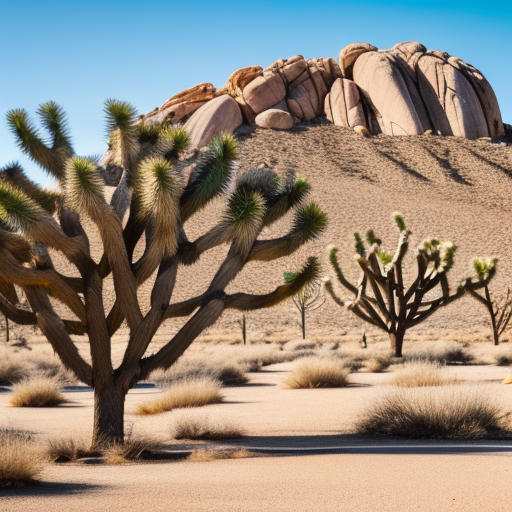The unique and fascinating world of plant life holds within it an array of captivating species, each with its own story to tell. One such intriguing species is the Joshua tree (Yucca brevifolia), a remarkable plant that thrives in the arid landscapes of the southwestern United States. In this article, we’ll delve into the captivating world of the Joshua tree, exploring its origin, characteristics, significance, and the challenges it faces in its natural habitat.
Table of Contents
- Introduction
- The Origins of the Joshua Tree
- Distinctive Characteristics of the Joshua Tree
- The Role of Joshua Trees in the Ecosystem
- Cultural and Historical Significance
- Conservation Efforts and Challenges
- The Future of Joshua Trees
- Conclusion
- FAQs
Introduction
The Joshua tree, with its distinct appearance and prevalence in the Mojave Desert, has piqued the curiosity of both scientists and nature enthusiasts alike. In this article, we’ll embark on a journey to uncover the secrets and wonders of this iconic plant.
The Origins of the Joshua Tree
The Joshua tree has ancient roots, having adapted to the harsh desert conditions over millennia. Its name is said to have been inspired by the biblical figure Joshua, who seemed to raise his arms skyward in prayer. But beyond its name, the tree’s history dates back to a time long before human civilization encroached upon its arid habitat.
Distinctive Characteristics of the Joshua Tree
Standing as a true testament to the wonders of evolution, the Joshua tree boasts several unique characteristics. Its spiky, rough-edged leaves and distinctive branching patterns allow it to thrive in the desert’s challenging environment. Its impressive height and branching arms make it a recognizable figure against the backdrop of the vast desert landscape.
The Role of Joshua Trees in the Ecosystem
Despite the seemingly inhospitable conditions of the desert, the Joshua tree plays a vital role in its ecosystem. Its flowers provide nourishment for local pollinators, and its fallen branches offer shelter for small animals. Moreover, its root system helps prevent soil erosion, contributing to the delicate balance of desert life.
Cultural and Historical Significance
The Joshua tree holds a special place in the hearts of indigenous communities and settlers who have long called the desert home. Its unique silhouette has inspired art, folklore, and even modern-day conservation efforts. The spiritual connection that many people feel toward these trees highlights their profound impact on the cultural tapestry of the region.
Conservation Efforts and Challenges
In recent years, the Joshua tree has faced challenges brought about by climate change and urban development. Rising temperatures and prolonged droughts threaten the delicate balance that these trees depend on for survival. Conservationists and scientists are working diligently to protect this iconic species and its fragile ecosystem.
The Future of Joshua Trees
As we peer into the future, the fate of the Joshua tree hangs in the balance. Will the efforts of dedicated individuals be enough to ensure the survival of this extraordinary species? By raising awareness, supporting conservation initiatives, and implementing sustainable practices, we can strive to secure a future where the Joshua tree continues to thrive.
Conclusion
The Joshua tree stands as a symbol of resilience and adaptability, defying the odds to flourish in one of the harshest environments on Earth. Its unique characteristics, cultural significance, and vital role in the ecosystem make it a plant worthy of admiration and protection. By joining hands and taking action, we can contribute to the preservation of this remarkable species for generations to come.
FAQs
Q1: Are Joshua trees found only in the Mojave Desert?
A: Yes, Joshua trees are primarily found in the Mojave Desert in the southwestern United States.
Q2: How tall can a Joshua tree grow?
A: Joshua trees can grow up to 40 feet in height, with their distinctive branches extending outward.
Q3: Are Joshua trees a type of cactus?
A: No, Joshua trees belong to the Agave family and are not classified as cacti.
Q4: Can Joshua trees survive extreme drought conditions?
A: Joshua trees have adapted to survive drought conditions, but prolonged and severe droughts can still pose a threat to their survival.
Q5: What can individuals do to help conserve Joshua trees?
A: Individuals can contribute by supporting conservation organizations, advocating for sustainable practices, and reducing carbon emissions to mitigate the effects of climate change on Joshua tree habitats.

